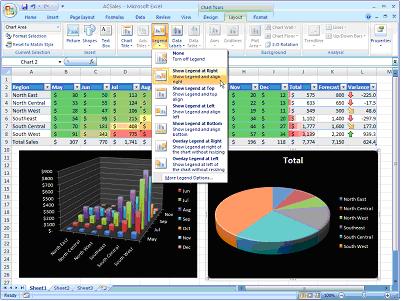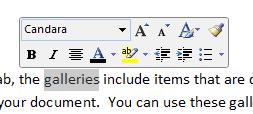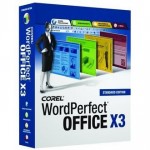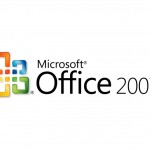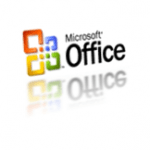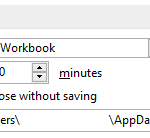The new Microsoft Office 2007 Fluent user interface primarily consists of nine key components:
- The Ribbon – consists of tabs displaying the commands that are most relevant for each of the task areas in each application.
- Contextual Tabs – whenever a user selects or inserts an object, the Contextual Tabs for modifying that object (such as pictures, tables, text boxes and charts) appear in the Ribbon.
- The Office Button – replaces the File menu.
- Galleries – provide users with a visual set of formatting options to choose from when working on a document, spreadsheet, presentation or Access database.
- Live Preview – shows the potential results of a Gallery selection within the document before it is actually applied.
- Mini Toolbar – provides easy and efficient access to the most frequently used
text-formatting commands. - Enhanced ScreenTips – appears as users move the mouse pointer over items in the Ribbon, showing the name of the feature, the keyboard shortcut and a brief description of what the feature is used for, and help links.
- Quick Access Toolbar – provides a single location for people to place the commands and features they use most frequently.
- KeyTips – appear in front of the Ribbon tabs with a single letter or combination of letters for users to type to activate the feature when users press the Alt key.
Microsoft Office Fluent user interface is implemented in Microsoft Office Word 2007, Microsoft Office Excel 2007, Microsoft Office PowerPoint 2007, and Microsoft Office Access 2007, with partial implementation on Microsoft Office Outlook 2007.

